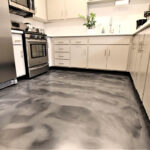Designer mirrors are more than just reflective surfaces; they are gorgeous items of art that may transform any space. When strategically placed and styled, they can enhance the beauty of your property, create the illusion of space, and even serve as focal factors in your decor. Listed below are expert suggestions for putting and styling designer mirrors to raise your interiors.
1. Understanding the Function of Your Mirror
Before diving into placement and styling, it’s crucial to understand the purpose of your mirror. Are you looking to make a room feel larger? Do you wish to add light? Or are you aiming to create a surprising focus? Knowing your intention will guide your decisions.
2. Selecting the Right Dimension
The dimensions of your mirror should be proportional to the space the place it will be placed. A large mirror can function a statement piece in a spacious lounge or entryway, while smaller mirrors work well in cozy spaces or zavoranka03 as part of a gallery wall. Consider the size of your furniture and different decor elements to make sure balance.
3. Placement Matters
Reflective Surfaces: Place mirrors throughout from home windows or light sources to maximise natural light. This not only brightens up the room but also enhances the sensation of openness.
Creating Depth: Use mirrors to create depth in slim hallways or small rooms. A strategically placed mirror can trick the eye into perceiving more space, making areas feel more expansive.
Focal Points: When you’ve got an attractive piece of furniture or artwork, consider inserting a mirror close by to replicate it. This can enhance the beauty of the piece while also drawing attention to it.
4. Styles and Frames
The frame of your mirror can significantly affect its impact. A minimalist frame suits modern decor, while ornate, vintage frames can add a contact of class to traditional interiors. Choose a style that complements your current decor to take care of cohesion.
Mixing Styles: Don’t be afraid to combine different styles of mirrors in one space. A mixture of round, sq., and rectangular mirrors can create an eclectic look. Just be certain that the colors and textures harmonize.
5. Hanging Height
The height at which you hang your mirror is crucial. For residing spaces, goal for eye level (about fifty seven to sixty five inches from the floor) for optimal reflection. In dining areas, consider hanging mirrors slightly higher to reflect the environment of the table setting without disrupting conversations.
6. Layering with Decor
Mirrors might be layered with other decor elements to create visual interest. Consider placing a mirror behind a console table with ornamental items like vases, books, or candles. This not only adds depth but additionally creates a dynamic look.
Gallery Walls: When making a gallery wall, integrate mirrors among your artwork. This mix can add dimension and break up visual monotony, making the display more engaging.
7. Utilizing Mirrors in Small Spaces
In smaller areas, mirrors can work wonders. In bogs, for example, a designer mirror can enhance class and make the space really feel larger. In bedrooms, consider a full-size mirror to not only serve a functional purpose but in addition reflect light and create an ethereal feel.
8. Maintenance and Care
Finally, to keep your designer mirrors looking their greatest, regular maintenance is essential. Clean them with a gentle glass cleaner and a soft cloth to avoid scratches. Be mindful of putting mirrors in areas with high humidity, as this can damage the frame and backing.
Conclusion
Incorporating designer mirrors into your decor can elevate your private home’s aesthetic, create a sense of space, and replicate your personal style. By understanding the purpose of your mirror, selecting the best dimension and placement, and careabsolutely styling them with your decor, you may create stunning visual effects in any room. Embrace the beauty of mirrors, and watch as they transform your interiors into a chic and inviting space.


